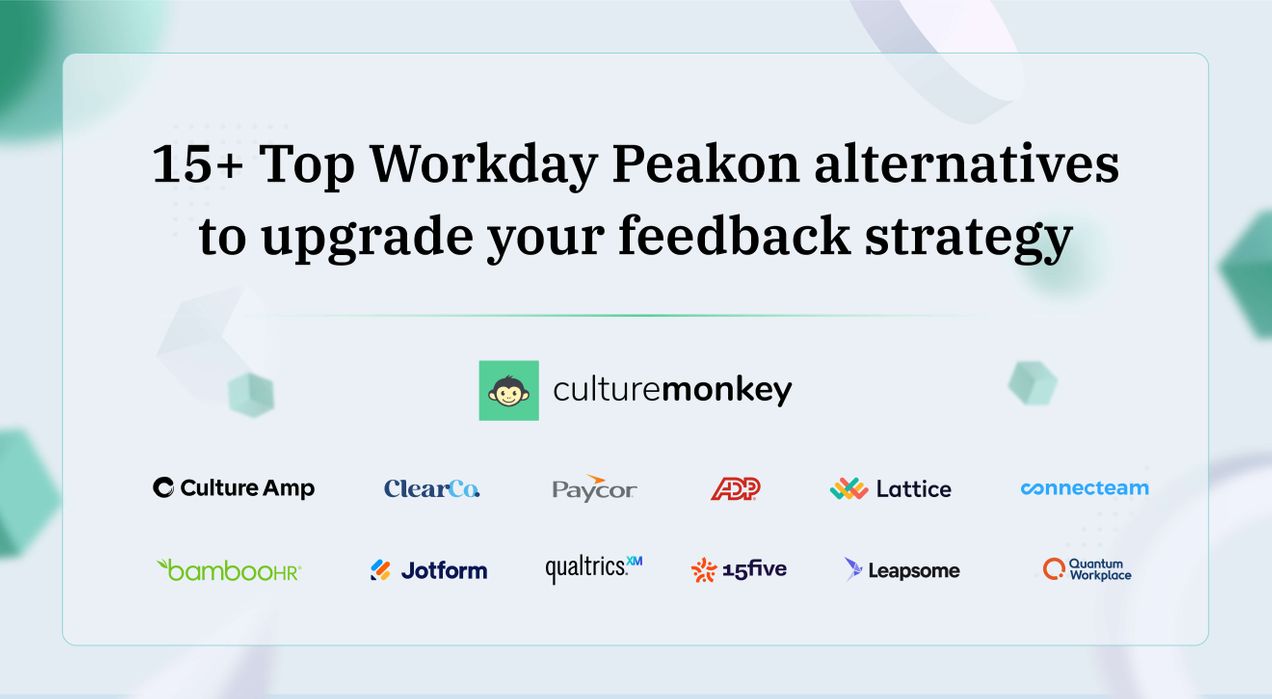Employee engagement survey implementation checklist for enterprises: A complete guide

Rolling out an employee engagement survey in an enterprise isn’t just about sending a link; it’s a strategic project with many moving parts. From designing the right questions to ensuring confidentiality, timing, and follow-up actions, every step influences the quality of insights you’ll get.
Without a clear framework, even the best intentions can lead to low participation or irrelevant data. That’s where an implementation checklist becomes invaluable. It keeps stakeholders aligned, processes streamlined, and results actionable.
In this complete guide, we’ll walk through a step-by-step enterprise-ready checklist that ensures your engagement survey isn’t just completed, but delivers meaningful insights that truly move the needle.
TL;DR
Why is running an employee engagement survey for your enterprise necessary in 2025?

TL;DR
Surveys reveal hidden issues like burnout, morale gaps, and engagement drivers across hybrid teams. They provide actionable insights for retention, productivity, and leadership alignment.
By building transparency and trust, surveys convert feedback into real improvements, making engagement a continuous, strategic, and business-critical process, not just a yearly exercise.
Enterprises can’t afford to guess what their employees are thinking. With hybrid teams, evolving expectations, and increasing talent mobility, listening isn’t just a “nice-to-have”—it’s mission-critical.
An employee engagement survey implementation checklist ensures you're not just collecting data, but creating momentum for real change by identifying areas for improvement.
- Employee expectations are at an all-time high: Today’s employees expect more than a paycheck—they want purpose, flexibility, and a voice in decisions. An enterprise engagement survey helps you stay in tune with these expectations before they turn into resignation letters.
- Workplace dynamics are shifting fast: Remote work, AI disruption, and generational shifts are changing how people work and interact. Engagement surveys give insight into how these shifts are impacting morale and productivity, so you can stay ahead, not reactive.
- Helps diagnose hidden issues early: You can’t fix what you can’t see. Surveys surface silent pain points—from burnout to broken communication flows—before they become full-blown HR crises.
- Drives targeted, strategic action: When combined with engagement survey implementation steps, survey results translate into clear, measurable plans that improve team culture and business outcomes, not vague intentions.
- Boosts transparency and trust: Inviting feedback and showing action builds credibility. A well-timed survey shows your commitment to listen and respond, core to modern leadership.
- Fuels data-driven decision-making: Gut instinct can only take you so far. Regular surveys backed by benchmarks and analytics allow HR and leadership to make informed, scalable decisions for enterprise-wide improvement.
- Supports retention and internal growth: The best way to improve participation in employee surveys is to actually act on them. When employees see results from their feedback, loyalty rises, and so does internal mobility, keeping top talent where they belong.
Objectives of enterprise employee engagement surveys

TL;DR
Surveys identify what drives engagement, measure leadership effectiveness, assess alignment with company vision, and highlight communication gaps. They provide benchmarks to guide data-driven actions.
Consistent surveys normalize feedback culture. Visible follow-up fosters trust and loyalty, turning insights into meaningful organizational improvements rather than static data collection.
Enterprise-scale engagement surveys aren’t just feedback exercises—they’re strategic diagnostics. A strong employee engagement survey implementation checklist helps clarify why you're asking in the first place, including insights related to job satisfaction.
With clear objectives, your survey becomes a catalyst for real transformation, not just a data dump.
1. Identify engagement drivers at scale
Every team has different motivators. These surveys uncover what drives engagement across departments, roles, and geographies—helping you tailor efforts instead of guessing. It's a foundational part of the enterprise engagement survey strategy.
2. Measure alignment with company vision and values
You can’t assume everyone is rowing in the same direction. Surveys help assess if employees feel connected to your mission, which is key to building an engaged and purpose-driven workforce.
3. Track leadership effectiveness
Engaged teams often correlate with effective leadership. These surveys provide a 360-view of how managers are perceived, which is critical for fostering engaged employees, helping you identify coaching opportunities, and building stronger leaders across the organization.
4. Understand employee needs in real time
In fast-changing environments, assumptions age quickly. Surveys act as live feedback loops, enabling honest feedback, allowing you to course-correct policies and workflows that may be causing friction or confusion.
5. Improve communication and transparency
One core objective is to identify gaps in the employee engagement survey communication plan. If employees feel out of the loop, engagement will dip. Surveys highlight where communication needs fixing—upward, downward, and cross-functional by including open-ended questions.
6. Benchmark performance internally and externally
Survey data offers a valuable reference point. With the right tools, you can compare your metrics against past cycles and industry standards, tying results directly into employee engagement survey best practices.
7. Build a culture of feedback and action
A major goal is to normalize feedback as part of your culture. When done consistently and transparently, surveys create a habit of listening and acting, showing employees that their voices drive meaningful enterprise change and improve employee satisfaction.
Employee engagement survey: What “implementation checklist” really means?

TL;DR
A checklist aligns purpose, stakeholders, cadence, communication, and privacy, ensuring surveys are executed effectively.
It turns feedback into action through structured steps, builds trust and accountability, and ensures long-term participation and engagement, making surveys a reliable tool for enterprise improvement.
Let’s be honest—saying “we’re launching a survey” sounds easy. But if you’ve ever tried running one across a 5,000+ employee enterprise, you know it’s anything but. That’s where the employee engagement survey implementation checklist comes in. It’s not a formality. It’s your blueprint for making sure every step—from goal-setting to post-survey follow-up—is intentional, aligned, and executed with care.
An implementation checklist isn’t just a list of things to do; it’s a system that connects your survey’s purpose with its outcomes. It aligns internal stakeholders, ensures the right employee engagement survey cadence, safeguards data privacy, and supports consistent messaging across the org.
Without it, even the best survey questions can fall flat—ignored, misinterpreted, or worse, distrusted, hindering effective employee engagement.
More importantly, it turns “just feedback” into action. With clear engagement survey implementation steps, you move beyond collecting data to actually responding, prioritizing, and showing progress. That’s what employees want to see—and what improves participation in employee surveys over time.
So when we talk about a checklist, we’re not just talking logistics. We’re talking about the structure that supports trust, transparency, and long-term engagement—one checkmark at a time. For enterprises, this is how surveys evolve from annual tasks into business-critical rituals.
Top 10 steps to include in your enterprise employee engagement survey checklist

TL;DR
Key steps: define purpose, select framework and benchmarks, set cadence, secure privacy, design communication, test tech, monitor responses, analyze results, benchmark, and assign actions with owners and deadlines.
This lifecycle approach ensures measurable change, fosters engagement, builds trust, and converts survey data into actionable insights for enterprise-wide improvement.
A successful employee engagement survey implementation checklist isn’t just about sending questions—it’s about managing the full lifecycle. These ten steps will help you run a seamless, results-driven survey that inspires action and earns trust across the enterprise.
Step 1 – Clarify Purpose, Success Metrics & Executive Sponsor
Start by answering: Why this survey? Define your goals—be it measuring morale, retention drivers, or leadership impact. Choose KPIs to track success and get an executive sponsor to champion the initiative. Leadership backing increases credibility and ensures wider enterprise engagement survey buy-in.
Step 2 – Choose Question Framework & Benchmark Set
Select a proven question framework based on your goals—Gallup Q12, eNPS, or a custom model. Tie it to a benchmarking dataset to track how you stack up over time or against peers. This alignment with employee engagement survey best practices ensures your data is both valid and actionable.
Step 3 – Set Cadence & Target Response Rate
Decide how often you’ll survey (annually, quarterly, or pulsed) and what a successful response rate looks like, considering work-life balance in your approach. A strong employee engagement survey cadence keeps feedback flowing while managing fatigue. Aim for 70%+ participation to get a true reflection of employee sentiment.
Step 4 – Lock Data Privacy & Anonymity Rules
Privacy fuels honesty. Define and communicate clear data security, anonymity, and access policies before launch. Ensure survey tools are compliant with GDPR or your local laws. This step also helps improve participation in employee surveys, as trust drives openness.
Step 5 – Craft Communications Plan (Pre, During, Post)
Your employee engagement survey communication plan should inform, energize, and close the loop. Use emails, town halls, manager huddles, and intranet banners to build excitement and explain the “why.” A strong comms plan reduces confusion and boosts both credibility and completion rates across the company.
Step 6 – Run a 48‑Hour Tech Dry‑Run
Before the official rollout, test the entire system. Use a controlled group to catch bugs, check workflows, and ensure your survey displays correctly across devices to gather both quantitative and qualitative data. This simple tech rehearsal can save you from mass frustration and post-launch damage control.
Step 7 – Launch & Monitor Response in Real Time
Once live, track response rates daily across teams, departments, and locations. Flag low-engagement pockets and empower managers to nudge their teams. Real-time monitoring helps you adapt mid-survey and drives toward your ideal completion benchmark.
Step 8 – Analyse Results + Benchmark vs Industry & Region
Post-survey, dive into the data. Compare results with historical performance and relevant benchmarks. Industry and regional comparisons give context, helping you identify strengths and gaps that need attention—vital for enterprise-wide planning and performance tuning.
Step 9 – Prioritise 2–3 Actions, Assign Owners, Set Deadlines
Avoid trying to fix everything at once. Focus on 2–3 high-impact areas based on survey data. Assign clear owners, set measurable outcomes, and track progress publicly towards development opportunities. This step ensures your engagement survey implementation steps lead to visible, sustainable change.
Step 10 – Close the Loop & Schedule Follow‑Up Pulses
Share what you heard and what’s happening next. Closing the loop shows that feedback drives real decisions. Schedule shorter follow-up surveys or pulse check-ins to measure progress. This cycle builds trust and reinforces your feedback-driven culture.
How to plan to implement an org-wide employee engagement survey?

TL;DR
Start with clear goals, leadership alignment, and a suitable framework. Plan communication, timing, and technical readiness to ensure high participation and accurate results.
Post-survey accountability, progress tracking, and transparent reporting reinforce trust and ensure surveys generate actionable insights, not just data.
Running a survey across an entire enterprise isn’t just about scale—it’s about precision. One missed step can skew results or kill participation altogether. That’s why using a structured employee engagement survey implementation checklist is non-negotiable for smart planning.
1. Define clear goals and outcomes
Start by understanding why you're launching this survey in the first place. Are you aiming to uncover burnout patterns, assess team morale, or track leadership alignment? Clear intent will shape better questions, reporting frameworks, and action plans. Without goal clarity, your enterprise engagement survey risks being just another HR checkbox.
2. Get leadership alignment early
Leaders don’t just approve the budget—they set the tone for participation. Bring them in early to define success metrics, share the value of the survey, and commit to owning results. Their endorsement directly influences credibility and trust. This step alone can improve participation in employee surveys dramatically.
3. Choose your survey framework wisely
The structure of your questions influences the clarity of your results. Stick to formats aligned with employee engagement survey best practices, such as Gallup Q12, eNPS, or custom models tailored to your culture. A thoughtful framework ensures responses are measurable, actionable, and comparable across cycles and benchmarks.
4. Design a strong communication plan
A well-timed employee engagement survey communication plan is the difference between “meh” and meaningful. Build messaging for all stages—pre-launch awareness, real-time nudges, and thank-you follow-ups. Keep it transparent, jargon-free, and personalized. Employees engage more when they know their voice truly matters—and that it’ll lead to action.
5. Finalize timing and cadence
Timing is everything. Launching during peak holidays or business chaos? Don’t. Set a realistic employee engagement survey cadence that supports ongoing feedback loops—be it annual, biannual, or through pulse surveys. Consistency not only builds rhythm but also shows employees you’re serious about listening.
6. Test your tech stack and workflows
Don’t let technical hiccups undermine trust. Run a 48-hour dry-run with a test group to iron out bugs, check data flows, and verify anonymity settings. Ensure your platform integrates well with existing HRIS tools. A seamless experience supports both survey success and long-term credibility across departments.
7. Assign post-survey accountability
The real value lies in what happens after the survey closes. Define who will analyze the results, lead the discussions, and own the next steps. Assign action owners, set deadlines, and share outcomes openly. This step not only drives change but also provides actionable insights that strengthen the full cycle of engagement survey implementation steps.
Role of CultureMonkey in launching your first survey with white glove onboarding
When launching your first enterprise-wide survey, the process can feel overwhelming—tech setup, frameworks, cadence, and communication all at once. That’s where CultureMonkey steps in with white glove onboarding. It’s not just software—it’s hands-on support built for real enterprise needs.
1. End-to-end survey planning support
CultureMonkey helps you structure your entire employee engagement survey implementation checklist—from aligning goals to defining cadence. Their onboarding experts guide you through survey frameworks, response rate benchmarks, and timeline planning, making the launch feel less like a project and more like a partnership.
2. Ready-to-use question templates and benchmarking
You don’t need to start from scratch. CultureMonkey provides pre-built question sets aligned with employee engagement survey best practices, plus access to benchmark data by industry and region. This ensures you ask the right questions and get context-rich insights immediately.
3. Personalized communication strategy
Need help designing your employee engagement survey communication plan? CultureMonkey helps you craft pre-launch announcements, in-survey nudges, and post-survey summaries. Their team ensures your messaging resonates—boosting clarity, response rates, and employee trust across the org.
4. Smooth tech integration and privacy compliance
CultureMonkey’s team handles the integration with your existing HRIS and communication tools. They also ensure full compliance with privacy and anonymity protocols, directly supporting a higher employee engagement survey cadence and participation over time, while improving the work environment.
5. Post-survey analytics and action-planning
Once results are in, CultureMonkey doesn’t leave you hanging. Their platform makes it easy to analyze data, visualize key themes, and plan next steps. With this, it becomes much easier to improve participation in employee surveys by showing real, visible follow-through.
Conclusion
Running an enterprise-wide engagement survey without a plan is like launching a rocket without a flight path: expensive, risky, and likely to crash. A clear employee engagement survey implementation checklist ensures your efforts lead to real impact, not just inbox noise.
From setting goals and cadence to communicating clearly and following up, every step matters. And if you're looking to take the guesswork out of the process, CultureMonkey has your back.
With white glove onboarding, benchmark-ready templates, and end-to-end support, they help you launch smarter, faster, and with confidence. Whether it’s your first survey or your fifth, CultureMonkey ensures every voice is heard—and every insight leads to action. Ready to turn feedback into results? Start your survey journey with CultureMonkey today.
Summary
FAQs
1. What is an engagement‑survey implementation checklist?
An engagement-survey implementation checklist is a step-by-step guide enterprises use to plan, launch, and act on employee surveys. It includes setting goals, choosing questions, finalizing cadence, ensuring privacy, and assigning post-survey actions. Following this checklist improves consistency, boosts trust, and drives better outcomes, making your enterprise engagement survey process smooth, measurable, and meaningful, ultimately leading to higher satisfaction.
2. What’s a good survey response rate?
A good response rate for an enterprise engagement survey is typically 70% or higher. This level ensures the feedback represents a wide employee base and allows for meaningful data analysis. Low rates may signal poor trust or communication. To improve participation in employee surveys, focus on clear messaging, anonymity assurance, and visible action on past feedback.
3. How often should we survey?
Survey frequency depends on your goals and resources. Most enterprises run annual engagement surveys, complemented by quarterly pulse surveys. A consistent employee engagement survey cadence builds trust and responsiveness while avoiding fatigue. Whatever the frequency, ensure each survey closes the loop—showing employees their input leads to change.
4. How long should the survey stay open?
Surveys should typically remain open for 7 to 14 days. This allows for reminders, supports global teams in different time zones, and boosts response rates. Shorter windows risk low participation; longer ones delay action. Time your employee engagement survey communication plan to match this window and keep momentum high.
5. What happens if we don’t act on results?
Failing to act on survey feedback breaks trust and discourages future participation. Employees may feel ignored, leading to disengagement and attrition. Ignoring data also undermines your employee engagement survey best practices. To build credibility, always share key takeaways, outline next steps, and assign owners for follow-up actions.



